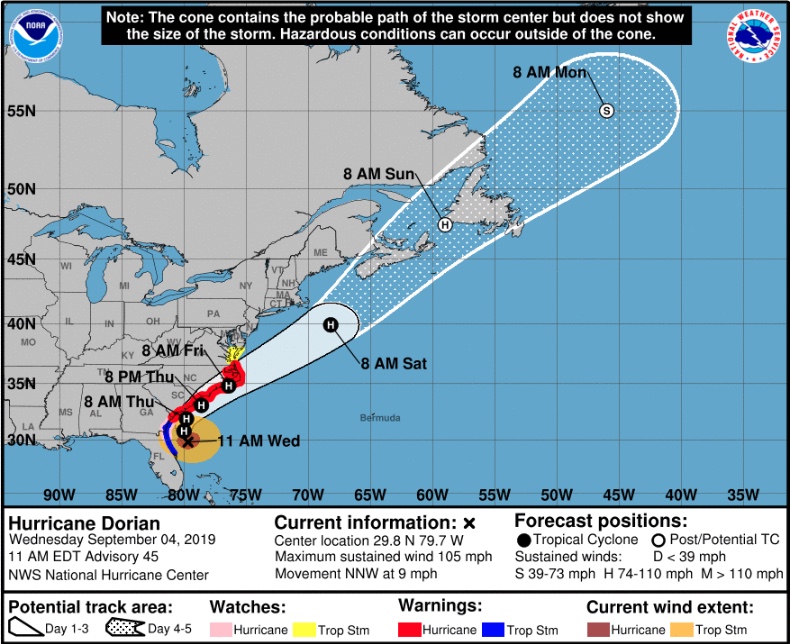Hurricane Dorian Barrels Up the Coast, Threatening the Carolinas
Dorian is now a Category 2 storm.

Hurricane Dorian, after devastating the Bahamas over the weekend while sparing Florida a direct hit, is now moving up the East Coast of the U.S., threatening the Carolinas, according to the latest update from the National Hurricane Center (NHC).
The storm is currently moving at 9 mph (15 km/h) parallel to the coast of northeastern Florida and is expected to move up near or over the coast of South Carolina and North Carolina tomorrow (Sept. 5) and Friday (Sept. 6). Hurricane warnings extend up to the North Carolina-Virginia border.
Dorian was downgraded to a Category 2 hurricane with sustained maximum winds of 105 mph (165 km/h), and "a slow weakening is expected during the next few days," according to the advisory. "However, Dorian is expected to remain a powerful hurricane during this time."
Related: Photos: Hurricane Dorian Leaves Devastation in Its Wake

Regardless of whether the eyewall of Dorian makes direct landfall on its move up the coast, "life-threatening storm surge and dangerous winds" are expected to hit parts of the Florida east coast and the coasts of Georgia and the Carolinas, according to the advisory. Water levels could rise before strong winds take hold, and residents should continue to follow the advice given by local emergency officials, the NHC wrote.
Dangerous flash flooding is expected along parts of the Carolinas' coasts, and storm surge, wind and rain may hit parts of the Virginia coast and the Chesapeake Bay.
- Photos: Hurricane Dorian Rages in Pics from Space
- Hurricanes from Above: Images of Nature's Biggest Storms
- History's 8 Most Destructive Hurricanes
Originally published on Live Science.
Get the world’s most fascinating discoveries delivered straight to your inbox.

Yasemin is a staff writer at Live Science, covering health, neuroscience and biology. Her work has appeared in Scientific American, Science and the San Jose Mercury News. She has a bachelor's degree in biomedical engineering from the University of Connecticut and a graduate certificate in science communication from the University of California, Santa Cruz.


